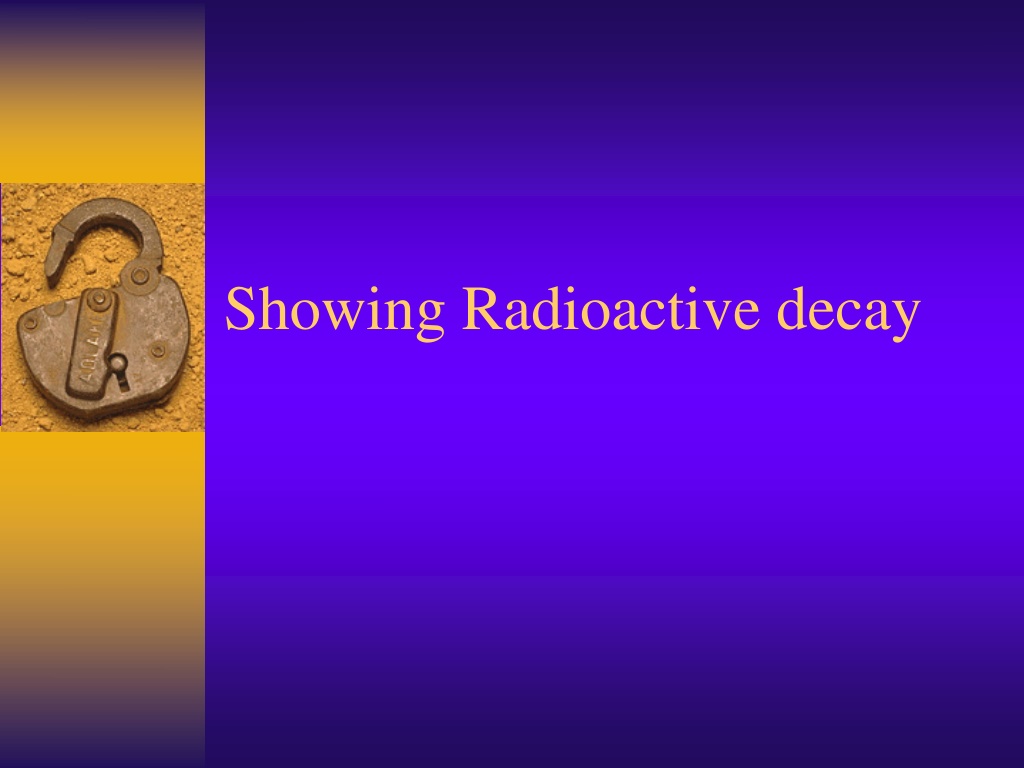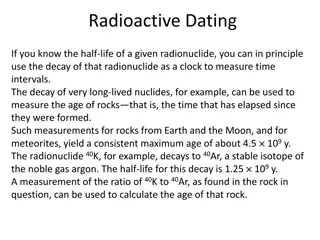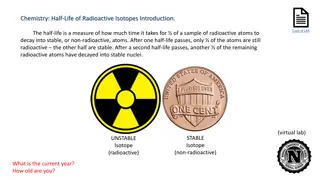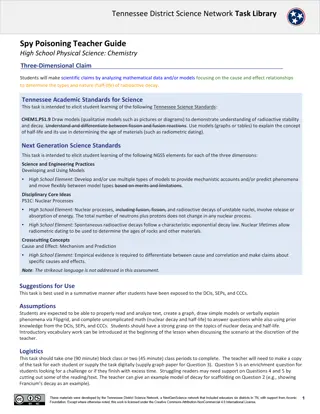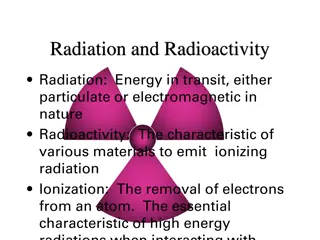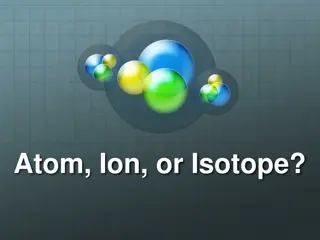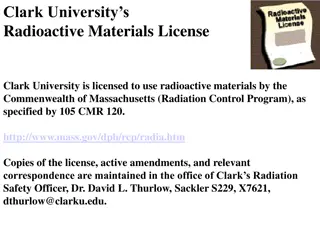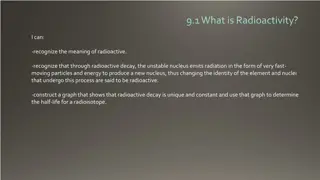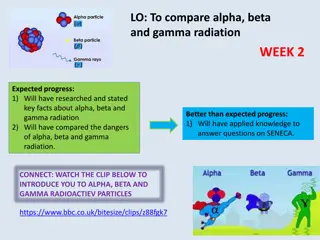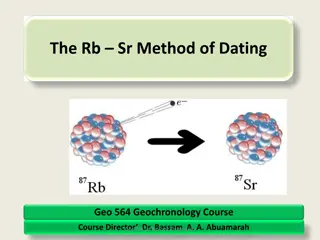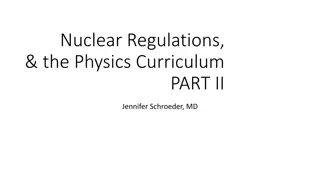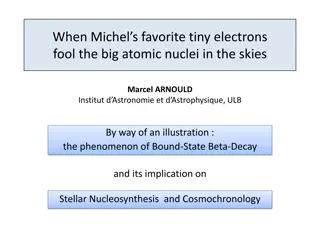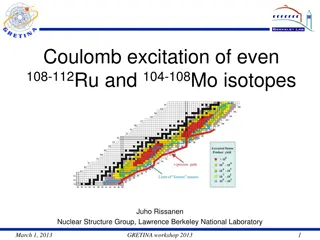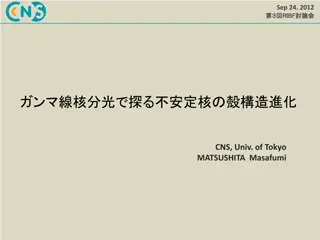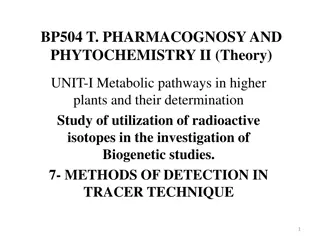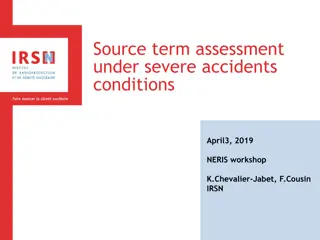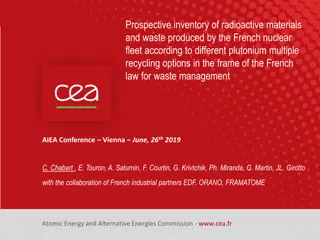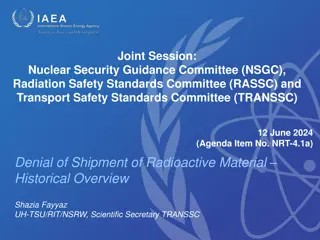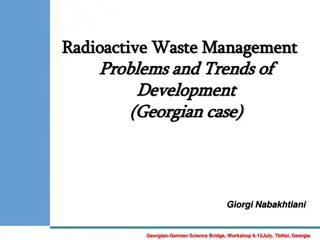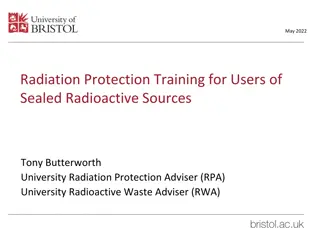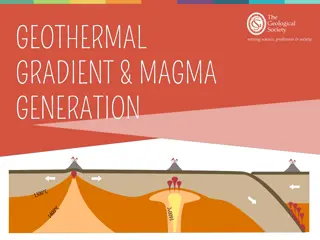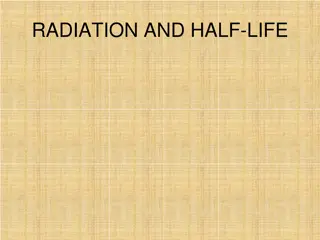Understanding Radioactive Decay and Isotopes in Chemistry
Explore the fascinating world of radioactive decay, isotopes, and nuclear transformations in this educational resource. From reviewing atomic numbers to illustrating alpha and beta decay processes, discover the fundamental principles behind these phenomena with detailed explanations and visuals. Delve into the decay of elements such as Radon-222, Plutonium-244, Polonium-210, and more to deepen your understanding of nuclear science.
Download Presentation

Please find below an Image/Link to download the presentation.
The content on the website is provided AS IS for your information and personal use only. It may not be sold, licensed, or shared on other websites without obtaining consent from the author. Download presentation by click this link. If you encounter any issues during the download, it is possible that the publisher has removed the file from their server.
E N D
Presentation Transcript
Review atomic number- number of protons (if this changes the element changes) mass number- number of protons + neutrons (isotopes change the # of neutrons) You can get the atomic number from the periodic table. You can NOT get the mass number (the mass numbers on the periodic table are the averages of all isotopes found)
Representing isotopes Carbon-14 and Carbon- 12 Mass number The atomic number of Carbon is 6 14 6 12 6 C C *mass # on top, atomic # on bottom
Showing Alpha Decay ~expulsion of 2 p+ and 2 no Show the alpha decay of Radon-222. decay 222 86 218 84 Po+ Rn lose 2 p+ so the atomic number is now 84 lose 2 p+ and 2 no so the mass number is now 218 element # 84 is Polonium The particle is also released alpha particle can also be written as 4 2He
Show the alpha decay of Plutonium-244 Polonium-210 Technetium- 98
Show the alpha decay of Plutonium-244 decay 244 94 240 92 Pu + U Polonium-210 decay 210 84 206 82 Po + Pb Technetium- 98 decay 98 43 94 41 Tc Nb +
Showing Beta Decay ~conversion of a neutron to a proton and an electron, and expulsion of the electron. The beta decay of Lead-214 Pb 82 decay 214 214 83 + Bi gain 1 p+ so the atomic number is now 83 lose 1 no and gain 1 p+ so the mass number is the same element # 83 is Bismuth The particle is also released beta particle can also be written as 0 -1e
Show the beta decay of Potassium-40 Carbon-14 Thorium-234
Show the beta decay of Potassium-40 decay 40 19 40 20 K + Ca Carbon-14 decay 14 6 14 7 C + N Thorium-234 decay 234 90 234 91 Th Pa +
Other types of Decay Positron production- a proton converts into a neutron and a positron, a particle with the same mass of an electron but opposite charge. The positron production from sodium-22 Na 11 22 22 10 0 Ne + 1e lose 1 p+ so the atomic number is now 10 gain 1 no and lose 1 p+ so the mass number is the same element # 10 is Neon The particle is also released Note that is it positive 1 not negative 1 like in beta
Electron Capture ~An inner orbital electron is captured by the nucleus converting a proton into a neutron Electron capture of Aluminum-26 Al + 13 26 26 12 0 Mg -1e lose 1 p+ so the atomic number is now 12 gain 1 no and lose one 1 p+ so the mass number is the same element # 12 is Magnesium
Positron production and Electron capture commonly occur together Show the positron production, then electron capture of Pb-201 0 201 82 201 81Tl 201 80 -1 + e Pb Hg 0 + e Cs-129 1 0 129 55 129 54Xe 129 53 -1 + e Cs I 0 + e 1
Cont. After electron capture, there is an unfilled orbital in the lowest energy level. Other electrons will have to fall down to replace it. In doing so they will release a photon, gamma radiation or some other EM wave. A positron particle was also released during this process.
Positron production and Electron capture commonly occur together Show the positron production, then electron capture of Pb-201 Cs-129
Decay Series More often than not a stable isotope is NOT formed from decay. ( , or others) You normally form an unstable isotope which decays again (repeat this several times until you get a stable isotope) This continual decay is called a decay series.
